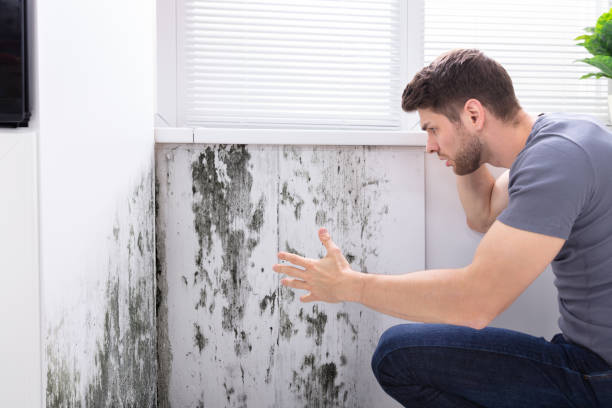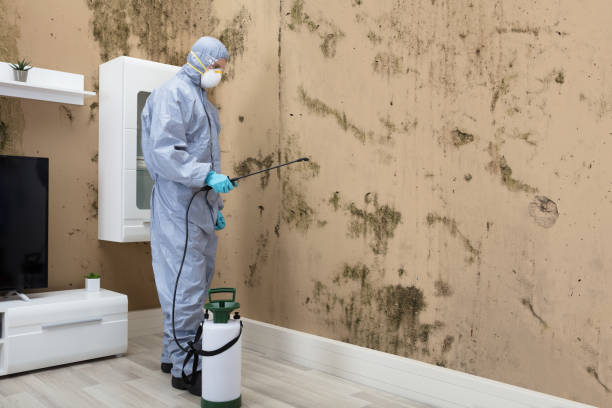
Mold is an unwelcome guest in any home or building, thriving in conditions that are often invisible to the naked eye but can lead to significant health and structural issues. Understanding the role of humidity in mold growth is crucial for maintaining a healthy indoor environment. This blog explores the intricate relationship between humidity and mold, providing insights into how to balance your indoor climate to prevent mold growth effectively.
Understanding Mold
What is Mold?
Mold is a type of fungus that grows in multicellular filaments called hyphae. Mold plays a vital role in nature by breaking down dead organic matter, but indoors, it can cause significant problems, such as mold and water damage repair. These hyphae produce spores that are often invisible to the naked eye and can spread easily through the air.
Health Impacts of Mold
Mold exposure can lead to various health issues, particularly for those with allergies, asthma, or compromised immune systems. Symptoms can include nasal stuffiness, throat irritation, coughing or wheezing, eye irritation, and in severe cases, mold infections. Long-term mold exposure can also contribute to chronic respiratory conditions.
The Relationship Between Humidity and Mold
Ideal Conditions for Mold Growth
Mold requires certain conditions to grow, with humidity being a key factor. Typically, mold thrives in environments with humidity levels above 60%. This is because mold needs moisture to grow and spread. In addition to high humidity, mold also needs an organic food source (such as wood, paper, or fabric), oxygen, and a suitable temperature range (generally between 60-80°F or 15-27°C).
The Science Behind Humidity and Mold Growth
Humidity refers to the amount of moisture in the air. When humidity levels are high, there is more moisture available for mold to absorb. It is important to recognize the warning signs of attic mold in such environments. This moisture can settle on surfaces, providing the damp environment mold needs to grow. Conversely, lower humidity levels reduce the amount of moisture available, making it harder for mold to thrive.
Relative Humidity vs. Absolute Humidity
It’s important to understand the difference between relative humidity and absolute humidity. Absolute humidity measures the actual amount of moisture in the air, while relative humidity measures the amount of moisture in the air relative to the maximum amount of moisture the air can hold at a given temperature. For mold prevention, managing relative humidity is crucial because it directly influences how comfortable the air feels and how likely it is to support mold growth.
Balancing Indoor Humidity
Optimal Indoor Humidity Levels
To prevent mold growth, it’s essential to maintain indoor humidity levels between 30-50%. This range strikes a balance that is generally comfortable for occupants and inhospitable for mold. Keeping humidity within this range can be challenging, particularly in areas with naturally high humidity or during certain seasons.
Tools for Measuring Humidity
Various tools can help monitor indoor humidity levels:
- Hygrometers: These devices measure the relative humidity in the air. They are affordable and easy to use, making them a practical choice for most homeowners.
- Smart Thermostats: Many modern thermostats come with built-in humidity sensors and can provide real-time data on indoor conditions.
- Dehumidifiers and Humidifiers: These devices can help control indoor humidity levels. Dehumidifiers remove excess moisture from the air, while humidifiers add moisture when the air is too dry.
Strategies for Controlling Humidity
- Ventilation: Proper ventilation is crucial for controlling humidity. Use exhaust fans in kitchens and bathrooms, and ensure that dryers and other moisture-producing appliances are vented to the outside.
- Air Conditioning: Air conditioners help reduce humidity by cooling the air and removing moisture. Ensure your air conditioner is appropriately sized for your space and well-maintained to maximize its dehumidifying effect.
- Insulation: Proper insulation can prevent condensation on walls and ceilings, which can contribute to mold growth. Ensure your home is well-insulated to maintain consistent indoor temperatures and reduce humidity fluctuations.
- Fix Leaks and Water Intrusion: Promptly address any leaks in roofs, walls, or plumbing to prevent water accumulation and high humidity levels.
Mold Prevention and Remediation

Preventing Mold Growth
Preventing mold growth requires a proactive approach to managing humidity and moisture:
- Regular Inspections: Regularly inspect your home for signs of mold, particularly in areas prone to moisture, such as basements, bathrooms, and kitchens.
- Prompt Cleanup: Address spills and leaks immediately to prevent moisture from accumulating. Use fans and dehumidifiers to dry wet areas quickly.
- Moisture-Resistant Materials: Use moisture-resistant materials in areas prone to dampness. For example, opt for mold-resistant drywall and paint in bathrooms and basements.
Remediating Mold
If mold growth is detected, it’s crucial to address it promptly to prevent further spread and health risks:
- Small-Scale Remediation: For small mold patches (less than 10 square feet), homeowners can often handle the cleanup themselves using commercial mold removal products or a mixture of bleach and water. Always wear protective gear, including gloves and a mask, during cleanup.
- Professional Remediation: For larger mold infestations or mold growth in HVAC systems, it’s best to hire a professional mold remediation service. Professionals have the necessary equipment and expertise to thoroughly remove mold and prevent its recurrence.
- Post-Remediation Testing: After remediation, conduct post-remediation testing to ensure all mold has been removed and humidity levels are under control. This can involve air quality testing and visual inspections.
Case Studies and Real-World Examples
Case Study 1: High Humidity in Coastal Regions
In coastal areas, high humidity is a constant challenge due to the proximity to large bodies of water. For instance, a family living in a coastal town experienced persistent mold growth in their home despite regular cleaning. After installing a whole-house dehumidifier and ensuring proper ventilation, they successfully reduced indoor humidity levels and eliminated mold issues.
Case Study 2: Winter Mold Growth
During winter, homes are often sealed tightly to conserve heat, which can lead to increased indoor humidity from activities like cooking and showering. These are some effective mold growth prevention tips for homeowners. In one case, a homeowner noticed mold growth around windows and in the basement during winter months. By using exhaust fans, running a dehumidifier, and ensuring the home was properly insulated, they were able to control humidity levels and prevent mold growth.
Case Study 3: Humid Climate Adaptation
In regions with naturally high humidity, such as the southeastern United States, maintaining optimal indoor humidity levels can be particularly challenging. A business owner in Florida faced mold issues in their office building. By implementing a comprehensive humidity control strategy, including commercial-grade dehumidifiers and routine HVAC maintenance, they managed to keep humidity levels in check and prevent mold growth.
Advanced Solutions for Humidity Control
Smart Home Technology
Advancements in smart home technology offer new ways to monitor and control indoor humidity. Smart thermostats and humidity sensors can provide real-time data and automate humidity control based on preset thresholds. These devices can also integrate with other smart home systems, such as HVAC and ventilation, to maintain optimal indoor conditions.
Building Design and Construction
Modern building design and construction practices are increasingly focusing on moisture control to prevent mold growth. This includes the use of vapor barriers, proper drainage systems, and moisture-resistant building materials. By incorporating these elements into the design and construction phases, builders can create structures that are less susceptible to mold issues.
Green Building Practices
Green building practices emphasize energy efficiency and indoor air quality, which often includes humidity control measures. Features such as green roofs, rainwater harvesting, and passive ventilation systems can help manage indoor humidity levels naturally. These practices not only prevent mold growth but also contribute to overall sustainability and occupant health.
Conclusion
Balancing indoor humidity is a critical aspect of maintaining a healthy and comfortable living environment. Understanding the relationship between humidity and mold growth allows homeowners and building managers to take proactive steps in preventing mold-related issues. By utilizing tools for measuring humidity, implementing effective control strategies, and considering advanced solutions, it’s possible to create an indoor climate that is both comfortable and inhospitable to mold.
Whether you’re dealing with the challenges of a coastal climate, the seasonal variations of temperate regions, or the high humidity of the tropics, the principles of humidity control remain the same. Regular monitoring, prompt action on moisture issues, and the use of modern technology and building practices can significantly reduce the risk of mold growth, ensuring a healthier indoor environment for all occupants.